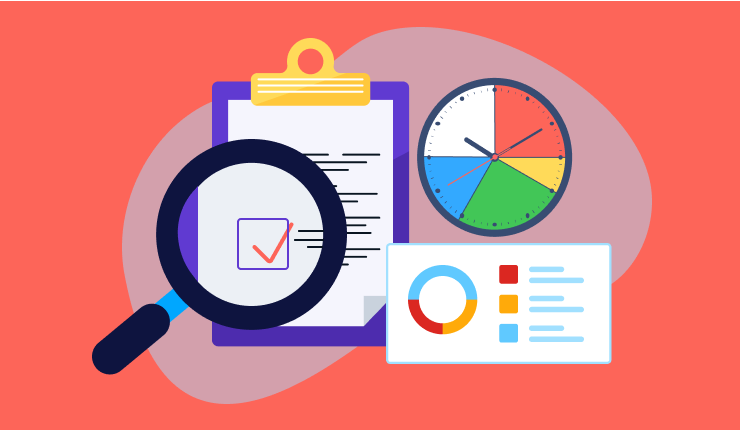
The last few decades set fast-paced and highly stimulating standards in our working environments. We have to be centered, focused, and successfully deal with the overload of day-to-day activity. But none is capable of giving it one hundred and ten percent the whole time, so we need to find ways to keep a high level of focus every day. So, how to stay focused most of the time?
Self-help books and websites are full of tips like “always do what’s inspiring and fun,” but they bear little relation to how our brain operates. Science knows more effective ways to stay focused.
Read on to learn how stay focused by tricking your human nature with these three scientifically proven approaches.
How to Stay Focused: 3 Scientific Approaches
1. Work in the Flow State
Have you ever experienced a state of deep concentration when you lost track of time? This condition is called the flow state and described in the Flow: The Psychology of Optimal Experience book by Mihaly Csikszentmihalyi.
The idea of the flow state is contrary to popular productivity concepts. While multitasking leads to the cognitive switching penalty – the energy and concentration cost of “juggling” several activities, the flow state encourages intense and laser-focused single-tasking. The state of flow is known to reduce stress, improve overall satisfaction, boost focus, self-confidence, and develop skills most effectively.
To achieve the flow state, you need to meet three conditions:
- The activity should have a clear set of goals. It gives a sense of direction and progress, adds structure to the task.
- Clear and immediate feedback on the task at hand. This approach helps to negotiate details and adjust not breaking from the flow state.
- Balanced skills and challenges. That means that the task is doable and challenging enough. The following diagram illustrates this principle.
To reach the flow state, you need to follow the following tips:
- Create a flow state trigger. For example, you may want to make yourself a cup of coffee or declutter your space before working.
- Work on one specific and doable task. Pick the one that is hard enough to focus on, but do not overwhelm you.
- Have healthy snacks – fruits, vegetables, nuts, and seeds. High sugar junk foods and energy drinks will give you a boost too, but your energy level will soon hit rock bottom.
- Get rid of distractions. Move to a quiet area, turn off the notifications, close the unnecessary tabs and apps. You might also want to wear headphones and listen to some soothing music without lyrics. In case you can’t beat the urge to check social media, we prepared 12 apps and tools to block distracting websites.
- Have a quality 7+ hour sleep. Avoid caffeine after lunchtime, put away screens before bedtime, and wind down instead by taking a bath, reading a book, taking a walk or listening to some soothing music.
The habit of using the flow state will not only improve your focus but enhance the quality of life and overall satisfaction.
2. Practice Mindfulness and Meditation
When you eliminate external disturbances, you have a higher chance to reach maximum concentration and productivity. But most of us deal with internal distractions as well, such as negative inner dialog or overall anxiety. There come mindfulness and meditation – activities that Tony Robbins, Marc Benioff, Bill Gates, and other successful people made their daily habits.
Mindfulness is about focusing your attention on the current moment and shifting your focus wherever you need it. For example, most of us occasionally suffer from tension in the shoulders or tightness in the chest. Most of us ignore these signals until we are unable to focus due to the immense amount of accumulated stress. With mindfulness, you make a conscious decision to observe your condition, take a break to get rid of the tension and come back to work rested and relaxed. This approach is known to improve memory, concentration, and performance.
Meditation is another approach to mindfulness. It is not just some yogi activity but a scientifically proven way to calm the mind, reduce stress, and improve concentration. If practiced regularly, meditation rewires your brain and enhances neuroplasticity treating anxiety and negative self-talk, boosting memory and concentration. If you are new to the concept of meditation, you’d better start with guided meditations. Try searching for guided meditations in the app store and find 10 minutes to give them a try.
3. Keep a Time Tracking Log
There are dozens of approaches to time management. Still, one thing is for sure: you have to keep your goals SMART: Specific, Measurable, Attainable, Relevant, and Time-Bound. As discussed above, the first four qualities are necessary for stress-free productivity, also known as the flow state. But what about time?
If your goal is to improve focus and productivity, time tracking is essential. Otherwise, chances are you are going to lose focus and procrastinate. Or worse – in the long run, you will join the majority of people who have no idea how they spend their work hours and how they could improve their productivity.
So our advice is to keep a tracking log. You may want to use your daily planner or time management software. To meet the needs of freelancers and corporate users, we created actiTIME – time tracking software available on any device. With actiTIME, you can get a full overview of what you or your staff are working on, identify bottlenecks, and improve efficiency.

















































